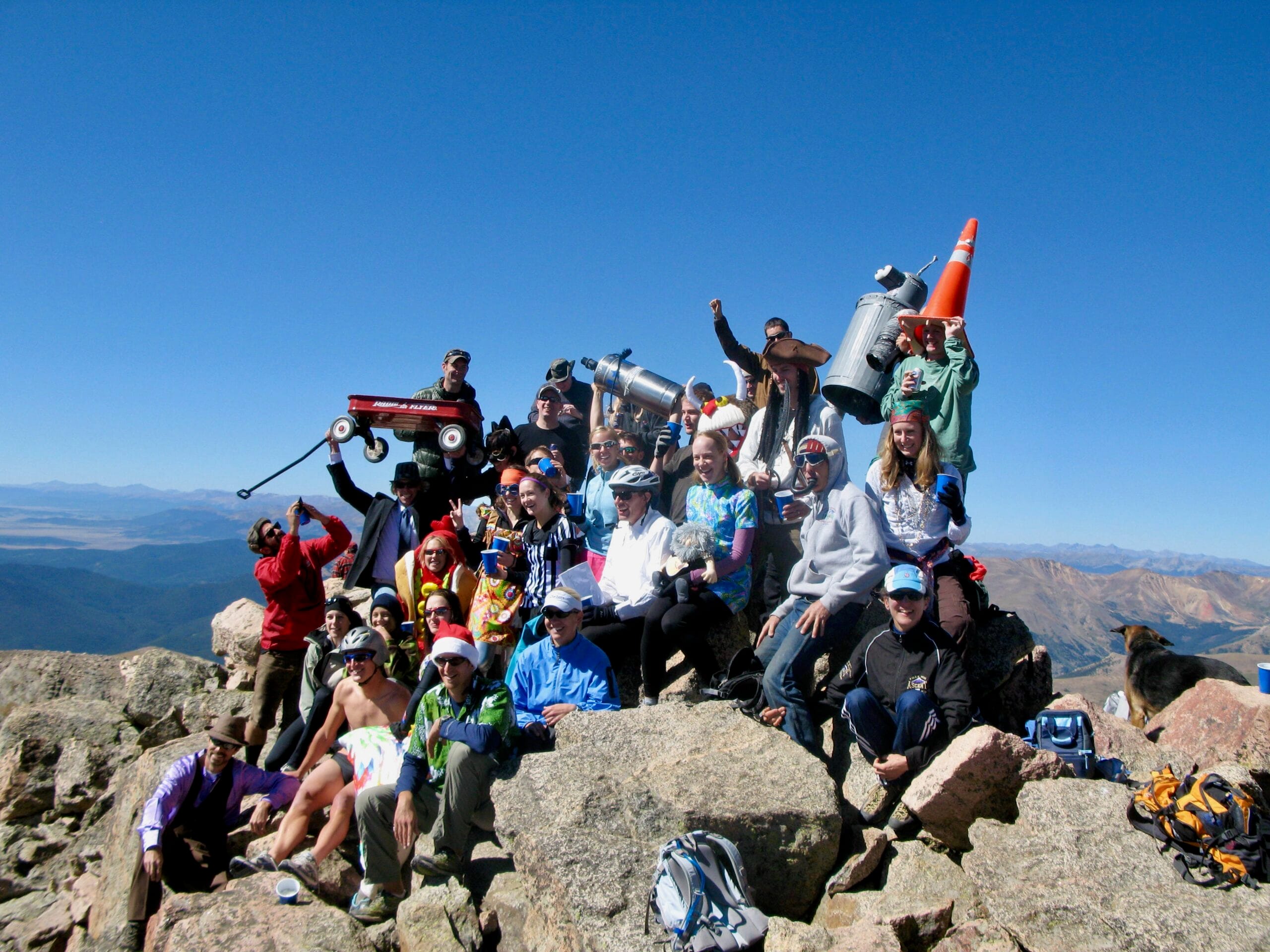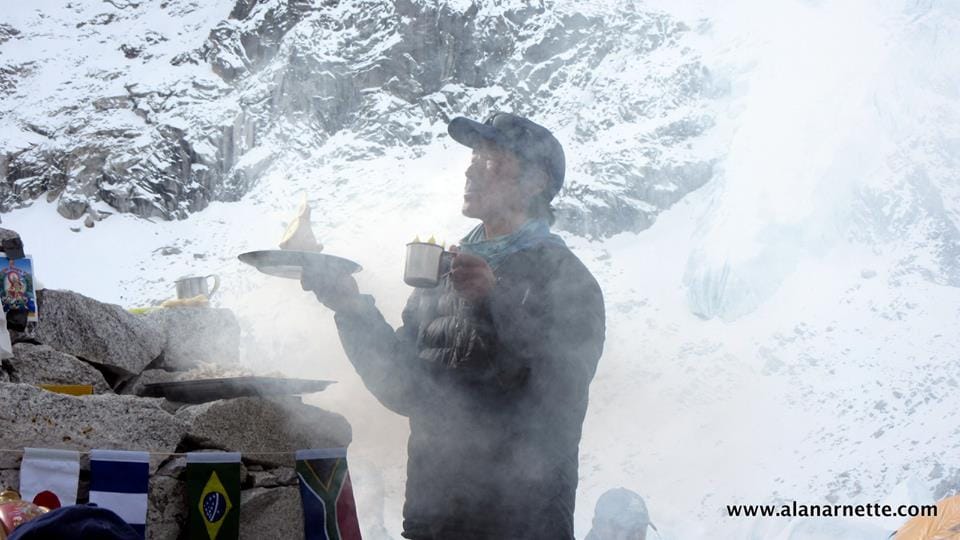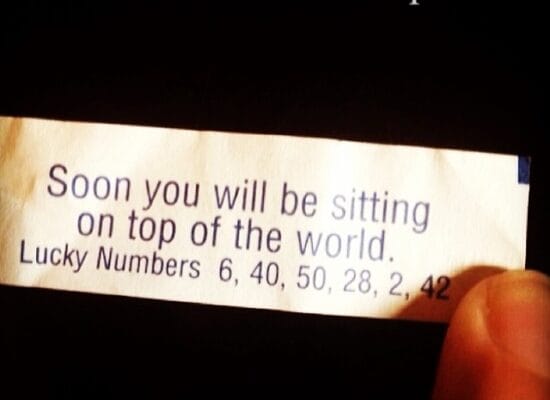Does anyone care that Jane and John Smithe became the first couple from rural Northland to summit Mount Impossible?
The comments posted on my blog show a declining interest in today’s climbing world and the highest level of disdain I’ve seen in covering the climbing world since 1999. And it appears that even the general media world is adjusting. Long-time climbing publications have sold to the lowest bidder. As a result, they are transitioning from print to online publications that feature captivating stories like “The Best Biodegradable Bag for your Poop” or the “Top 10 Ways to Wear Socks.”
Climbing forums have plenty of pithy comments citing fast food restaurants on the summits, paved trails, and men (and women) in kilts (and stilts) doing the ordinary. And, of course, a fan favorite, “Getting to the top is optional, getting down is mandatory,” where the author thinks they invented the saying (apologies to Mr. Viesturs.) Everyone is a comedian, it appears, even me.
This summer, a reporter researching an Everest story asked me to “explain the difficulty and significance of Barney being number 646th American to summit Everest.” I politely explained that even the magazines sold at a grocery store checkout lane wouldn’t cover it.
So what’s going on?
I’ll break down what I see as the reason, but for those with little time, or interest, this is my take. The explosion of vanity combined with the arrogance of self-promotion is destroying what little credibility ever existed in the climbing world from the eyes of the masses. Feats once admired are now questioned. Climbs once coveted are now commonplace. It feels like everyone claims their accomplishment as some record. Small teams of professionals, or at least qualified amateurs, have morphed into scores of individuals supported by expert climbers who do all the dirty work. In a sport where “style” was once paramount, it’s now not understood. And the public is bored and has little interest in Mr. and Mrs. Smithe’s achievements.
This is not new; it’s just the magnitude that has changed. Climbing God, R. Messner regularly chides the climbing world as nothing more than tourists. He chastises those who climb with support, use helicopters, and especially supplemental oxygen. Yet, oddly, he seems to admire those who claim records using those precise crutches.
But, before I go on, I don’t want to cast my scorn too wide. Mountain climbing helped define and change my life for the better. However, it took me a few years to figure it out, and I’m still learning. There are tons of impressive accomplishments still occurring across the mountain landscapes. Many climbers deserve every award and accolade they receive, and scores of peaks and routes have yet to be climbed. As I’ve said for a long time, climbing is a sport that makes you a better person through the requisite challenges and suffering. The rewards are genuine, and the sense of accomplishment is real. So don’t stop climbing; just earn the right. Don’t try to cheat the mountain or the public.
But does anyone care? What’s behind the public scorn? Several major themes revolve around price, client and guide experience, support, and technology. There’s no villain in this story, just traditional capitalism and entrepreneurship at work with the same market dynamics we’ve seen in other sports and recreational activities, from skiing to cruise ships. However, the unintended results can be deadly and destructive, so we must get it right. Let’s drill into what is going on with high-altitude mountain climbing.
The Key Factors
First, an expansion of low-cost guides advertising “summits with no experience” has changed the climbing landscape. Today, more people with less experience are attempting the highest peaks than ever. As a result, countries are issuing permits in record numbers. And, these days, anyone who climbs seems to call themselves a guide, with little oversight to protect consumers.
Second, climbing technology, especially with supplemental oxygen delivery, has advanced so that a climber can suck up to 8 liters per minute. That is four times the historical level of 2LPM, reducing the effective ‘feel like’ altitude by thousands of feet. In this same department, at home, ‘altitude-tents’ promise to dispatch a climber to a peak already acclimatized to 20,000 feet or more, reducing the number of irritating rotations needed to help the body naturally adjust. The Faustian bargain saves the climber time and gets them quickly back to work.
Third, the price has come down by a lot. For almost ten years, I have published an article on “How Much Does it Cost to Climb Mt. Everest?” The trends are clear. Similar to the airline industry, multiple pricing tiers and service levels exist. In 2022, you could join an Everest team for as little as $25,000, or as much as, well, it’s seemingly limitless. In any event, the highest price hovers around $100,000, double that from some operators, but that includes free drinks. The net result is that the people who could always afford high prices continue to go, seduced by base camp luxuries comparable to a Parisian five-star hotel. But on the other end, the low prices attract people who can’t afford to earn climbing experience but can scrape enough to afford an 8,000-meter peak. But, again, they are told that “no experience is needed,” thus the increase of inexperienced people requiring massive support. And compounding the staus, there’s not enough qualified support to safely keep the traffic moving.
Finally, social media has given a platform to anyone who wants to claim anything; no proof required. The claims go unvetted, as do records. But followers click the “love and like” buttons and wax poetically about the fantastic achievement and ask when they can join the next one. After all, you said, “no experience required.”
Citizen judges follow some climbers and call them out on their claims. For example, one tribunal recently reported on the 8000-meter summit triumphs. It’s a small, rare club that claims to have reached the top of all 14. So the investigators went looking for verifiable summit proof. Incredibly, only four of 53 climbers could rightfully claim all 14 summits, according to the findings. In response, some called their results “BS,” others ignored the report, while some accepted the conclusion and vowed to return to the peaks in question. Sadly, some only have their families to defend their honor, as they have died. This report has done nothing to increase the sport’s credibility but may improve its integrity.
“Get off my Lawn!”
So, what to do? For many, it’s a colossal yawn because the sport has always been a farce and joke to them. They are happy to see the rust and tarnish on what they call a ‘rich man’s playground.’ However, many admire legitimate accomplishments and yearn for the good old days. Now, before you cite me as an old timer yelling, “Hey you! Get off my lawn,” I invite you to read my recent “An Open Letter to Mountaineering Policy Decision Makers.” In the piece, I cite several changes needed to improve the climbing community’s safety and the mountains’ sanctity. They are honest recommendations that could be put into effect immediately. But, alas, money often gets in the way of doing the right thing.
So, bored public, I will make this vow to you. I will continue reporting on climbing the world’s highest peaks as I can, but probably not on John, Jane, and Barney. I will seek unique climbs and personalities and promote those who climb with integrity. I will ignore those who seek only underserved profit and attention. I will continue to be generous in my praise and candid in my criticism.
But don’t give up on the sport. Just don’t believe everything you hear. Honor the individuals who have a vision and follow their dream. Click the “like” button on their social media when they report their result, summit or not, guided or not, used oxygen or not. Let’s join them in their joy and satisfaction of an effort well done.
Climb On!
Alan
Memories are Everything





5 thoughts on “Opinion: The Changing World of Climbing News”
I agree with all you’ve said, Alan, and the commercialization of the climbing industry as a whole has been an area filled with conflicting viewpoints and you always do an excellent job of portraying both sides. I have been a reader for a few years now and always look forward to your newsletters. They’ve become my main source of knowledge into the climbing world and love your curated, digestible content. Happy holidays, Alan, and thank you so much for your amazing reporting.
Indeed. I’m fed up writing about how climber X is making claims that are demonstrably untrue. It has trapped me between the rock of loving what the mountains has given me, and the hard place of increased cynicism because integrity in those mountains is crashing and burning (helped by the actions of some of its biggest stars). Any advice aspiring mountaineer nowadays should start with ‘Just don’t lie’.
Alan: I have never climbed a mountain (aside from 9,500 ft Mt Fairview at Lake Louise) but I read all your posts with rapt interest. Your insight, views and opinion & respect for the mountains (to say nothing of your continued support for Alzheimer’s – from which my dad died) are exemplary.
Please continue your reporting and articles & do not be deterred by the current “trends”.
Thankyou for continuing to report integrity filled climbs! Your writing is terrific!
What a good article!!! I agree with everything.
Comments are closed.